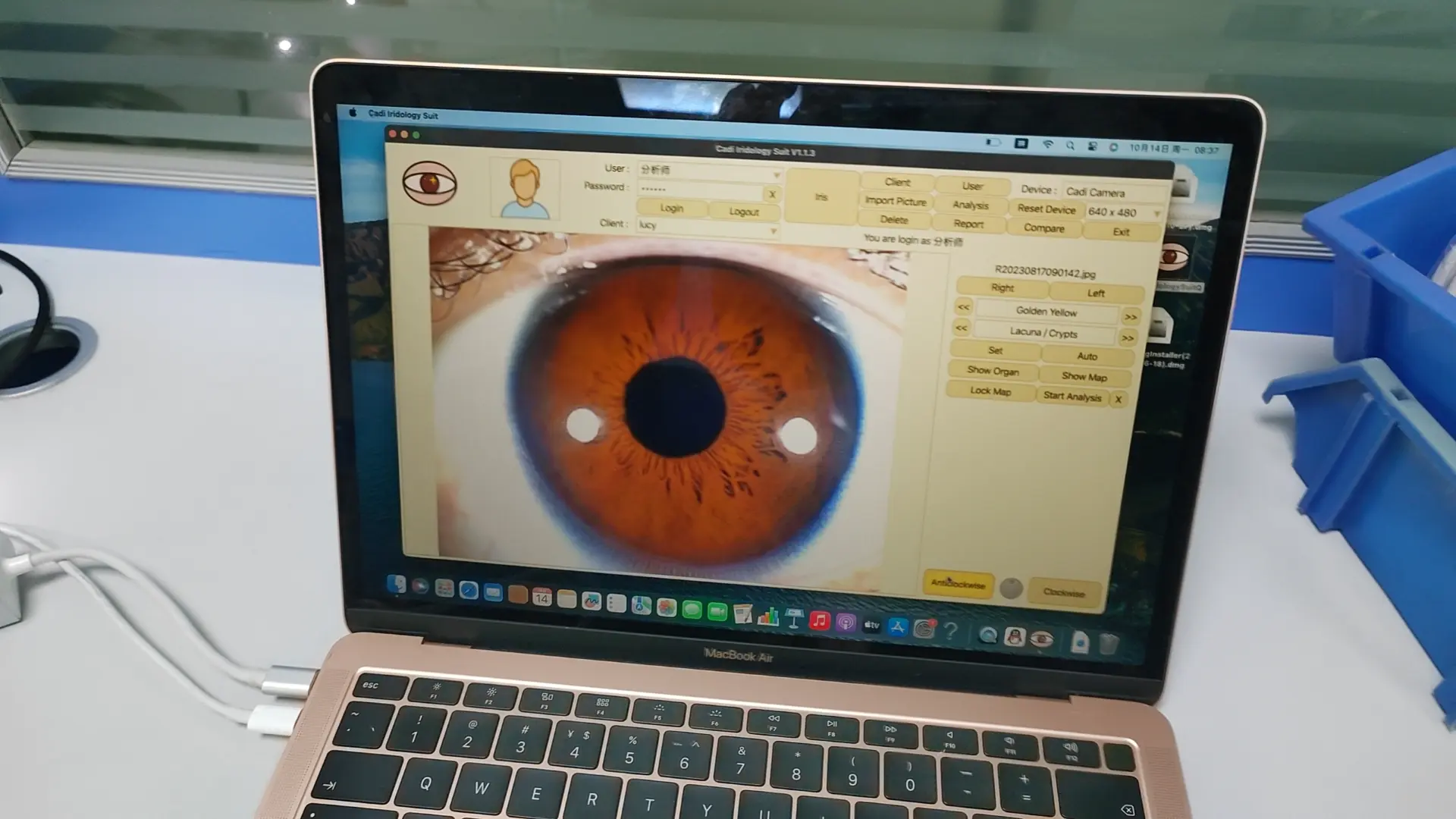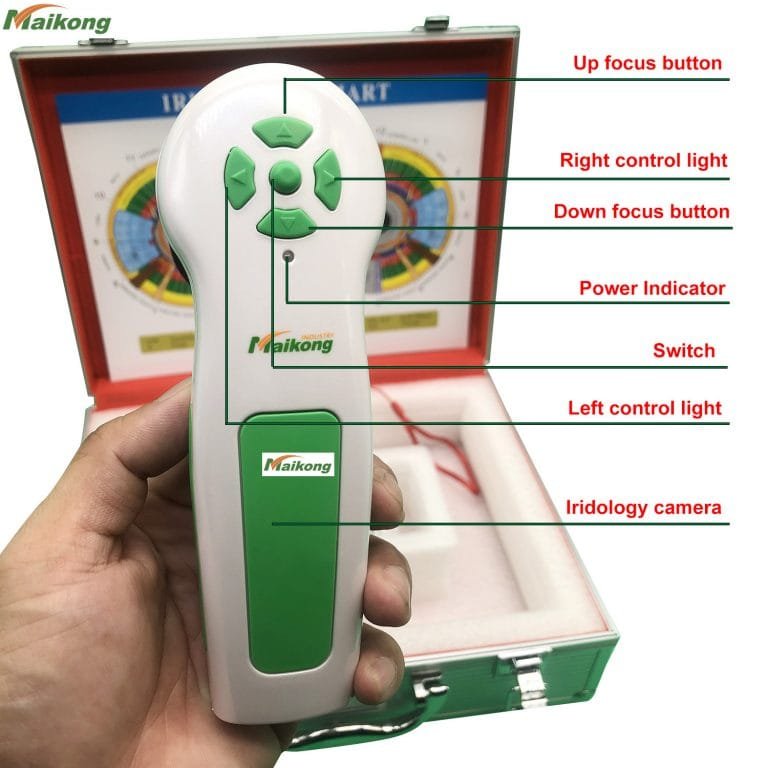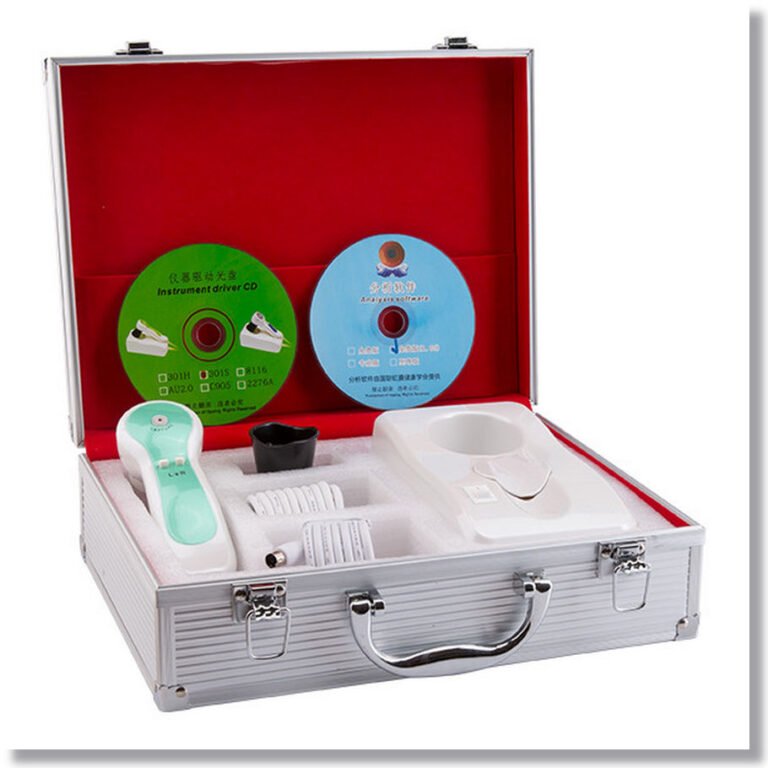
Iridology, is it nonsense?
Iridology, is it nonsense?
Some opponents of iridology have stated that Iridology is “non-sense” but is this really the case?
First of all let’s look at the facts, most of these critics have absolutely no education or formal training in the science of Iridology yet they have a negative opinion.
They cite several poorly designed Iridology studies that have been reported in Western scientific medical journals. These studies based their evaluations on outdated principles and in many cases, employed Iridologists who had insufficient or outdated training.
Iridology, like most sciences, is constantly evolving, as new information and studies become available this does not however mean that Iridology is invalid.
The adverse effects from these negative research studies have been very destructive to the science and practice of Iridology, especially in the United States. Researchers often find these negative studies as the only sources of information on which to base their opinions.
Often times some of the same critics that claim Iridology is “non-sense” are the ones who are still debating whether or not the use of, Herbs, Chiropractic, and Acupuncture are valid forms of health care.
Meanwhile in countries such as Germany, Russia, the United Kingdom and many Asian countries, have a much greater acceptance of Iridology. In fact, the Russian Government has sponsored Iridology research and has found it to be extraordinarily accurate. Many Medical Doctor’s in these countries have been using Iridology in their practice for decades.
Those who have studied the science and given it an open and unprejudiced consideration have discovered an amazingly useful, non-invasive, analytical tool.
It is of the utmost importance that a person uses good judgment when selecting an Iridologist. They must be sure that their Iridologist is properly trained with the most up to date information by an established and reputable institution.
Used correctly, iridology gives the individual, information concerning their overall health level that is not available in any other way. An iridologist’s services are an important element in a total, holistic health care program.

Ce este iridologia?
Ce este iridologia?
Iridology (sometimes referred to as iris diagnosis) is based on the bizarre belief that each area of the body is represented by a corresponding area in the iris of the eye (the colored area around the pupil). According to this viewpoint, a person’s state of health and disease can be diagnosed from the color, texture, and location of various pigment flecks in the eye. Iridology practitioners claim to diagnose “imbalances” that can be treated with vitamins, minerals, herbs, and similar products. Some also claim that the eye markings can reveal a complete history of past illnesses as well as previous treatment. One textbook, for example, states that a white triangle in the appropriate area indicates appendicitis, but a black speck indicates that the appendix had been removed by surgery. Iridology charts—dozens of which exist—vary somewhat in the location and interpretation of their iris signs. Some iridologists use a computer to help them analyze eye photographs and select the products they recommend. Sclerology is similar to iridology but interprets the shape and condition of blood vessels on the white portion (sclera) of the eyeball.

Infinite Iris Launches New Iridology Education Website iriscope.org
Infinite Iris Launches New Iridology Education Website iriscope.org
Most people don’t realize that the Iris may have the power to show systemic health issues. Iridology is a “whole-istic” natural non-invasive form of health analysis that has been utilized on patients since the early 17thcentury. In the U.S. it is still a mostly unknown specialty even though legendary United States Iridologist Dr. Bernard Jensen, alone treated more than 350,000 patients using information obtained through Iris analysis during his tenure. Medical doctors throughout Europe, Russia and Asia have been utilizing Iridology as a noninvasive health assessment tool for decades.
Infinite Iris is excited to announce the launch of its new website promoting the study of Iridology, and world renowned Iridologist Ellen Tart-Jensen. Infinite Iris believes that this site will increase the exposure of the science of Iridology in North America as well as internationally.
My goal is a simple one: help others improve their health. Iridology combined with new nutritional elements to my diet helped me regain my health after a debilitating life-long disease. We hope that the new Infinite Iris website and the new blog will educate people on Iridology and the importance of what goes into one’s body as it affects their personal health; says world renowned educator, Iridologist and author of Techniques In Iris Analysis, – Ellen Tart-Jensen Ph. D., D.Sc., CCII.
The website will become a major educational portal, which discusses all new information, new textbooks, e-books, and media, as they pertain to the study of Iridology.
The launch of the website will be on January 11th, 2013. We would appreciate any feedback or additional information you would like to see available on iriscope.org .

Vand aparat de fotografiat pentru iridologie
Vand aparat de fotografiat pentru iridologie
Please feel free to look at this website for our USB Digital Iriscope, Iridology camera, iris camera, eyology and sclerology USB system ccarry case To see our later website click the above button.
The EyeRonec Pebble Pro Iridology camera has been created for the NON TECHNICAL Naturopath and Natural Therapist, Iridologist and Herbalist.
The EyeRonec Pebble Pro Digital Iriscope takes only a little space on the desk and is very portable, Once your MAC or PC has the software installed all you need to do is plug the camera into the USB.
The EyeRonec Iridology iris camera needs No chin-rest, No dreaded flash, No ambient light problems, No heavy cases to carry,
The EyeRonec Pebble Prp sells for less then the price of other’s “Numai cameră” preţ.
The latest EyeRonec model Iriscameras have 8 light (for blue eyes) and 2+ side lighting LED’s for brown eyes.
The lights (white dots) are within the pupil zone ! No artifacts (white dots or streaks) in the iris so pictures are better than images taken with”deschide” Camere de sistem

Ce este iridologia?
Ce este iridologia?
Iridologia (cunoscută și ca iridodiagnosis sau iridodiagnosis) este o tehnică de medicină alternativă ai cărei susținători susțin că modelele, culorile și alte caracteristici ale irisului pot fi examinate pentru a determina informații despre sănătatea sistemică a pacientului. Practicanții își potrivesc observațiile cu diagramele irisului, care împart irisul în zone care corespund unor părți specifice ale corpului uman. Iridologii văd ochii ca “ferestre” în starea de sănătate a organismului.
Iridologii susțin că pot folosi diagramele pentru a distinge între sistemele și organele sănătoase din organism și cele care sunt hiperactive, inflamate sau suferinde. Iridologii susțin că aceste informații demonstrează susceptibilitatea unui pacient față de anumite boli, reflectă probleme medicale din trecut sau prezice probleme de sănătate ulterioare.
Spre deosebire de medicina bazată pe dovezi, iridologia nu este susținută de studii de cercetare de calitate și este considerată pe scară largă pseudoștiință. Caracteristicile irisului sunt una dintre cele mai stabile caracteristici ale corpului uman de-a lungul vieții.[discut – discutați] Stabilitatea structurilor irisului este fundamentul tehnologiei biometrice care utilizează recunoașterea irisului în scopuri de identificare.
În 1979, Bernard Jensen, un lider american iridolog și alți doi susținători ai iridologiei nu au reușit să stabilească baza practicii lor atunci când au examinat fotografiile ochilor a 143 de pacienți în încercarea de a determina care dintre ei aveau insuficiențe renale. Dintre pacienți, patruzeci și opt fuseseră diagnosticați cu boală de rinichi, iar restul aveau o funcție renală normală. Pe baza analizei lor asupra pacienților’ irisi, cei trei iridologi nu au putut detecta care pacienti aveau boala de rinichi si care nu.
Irisul este zona galben-verzuie din jurul pupilei transparente (care se arată ca negru). Zona exterioară albă este sclera, a cărei parte centrală transparentă este corneea. Iridologii folosesc în general echipamente precum o lanternă și o lupă, camere sau microscoape cu lampă cu fantă pentru a examina irisul pacientului pentru modificări ale țesuturilor, precum și caracteristici precum modele specifice de pigment și arhitectură stromală neregulată. Marcajele și modelele sunt comparate cu o diagramă de iris care corelează zonele irisului cu părți ale corpului. Diagramele tipice împart irisul în aproximativ 80-90 de zone. De exemplu, zona corespunzătoare rinichiului se află în partea inferioară a irisului, chiar înainte de ora 6. Există variații minore între diagrame’ asocieri între părți ale corpului și zone ale irisului.
Potrivit iridologilor, detaliile din iris reflectă modificări ale țesuturilor organelor corespunzătoare ale corpului. Un practicant proeminent, Bernard Jensen, a descris-o astfel: “Fibrele nervoase din iris răspund la modificările țesuturilor corpului manifestând o fiziologie reflexă care corespunde unor modificări specifice ale țesuturilor și locațiilor.” Aceasta ar însemna că o condiție corporală se traduce printr-o schimbare vizibilă a aspectului irisului, dar acest lucru a fost infirmat prin multe studii. (Consultați secțiunea privind Cercetarea științifică.) De exemplu, semnele inflamatorii acute, inflamatorii cronice și catarale pot indica implicarea, întreținerea sau vindecarea țesuturilor îndepărtate corespunzătoare. Alte caracteristici pe care le caută iridologii sunt inelele de contracție și Klumpenzellen, care pot indica diverse alte afecțiuni de sănătate.
Șapte inele Zone/inele de iris și regiunea/organul care îl însoțește
Interior: stomac.
Al doilea: Intestinul subțire și gros.
Al treilea: circulația sângelui și a limfei.
În al patrulea rând: organele interne și sistemul endocrin.
Al cincilea: Sistemul musculo-scheletic.
Exterior: piele și organe de eliminare.

































